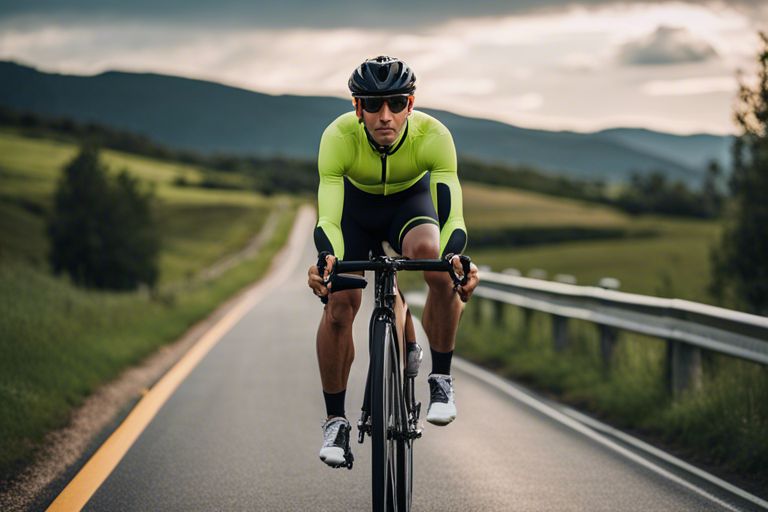Over the years, cycling shoes have evolved to offer better performance and comfort for cyclists. One common question that arises is whether cycling shoes are comfortable to walk in. Let’s explore this topic to help you understand the functionality and comfort of walking in cycling shoes.

Key Takeaways:
- Cycling shoes are designed for cycling efficiency: While cycling shoes are lightweight and stiff to maximize power transfer during cycling, they may not be the most comfortable option for walking long distances.
- Consider the type of cycling shoe: Some types of cycling shoes, like road cycling shoes, have minimal tread and are less suitable for walking. Mountain bike shoes or commuter cycling shoes often have more grip and are easier to walk in.
- Fit and comfort are key: Finding the right size and fit for your cycling shoes can significantly impact their comfort level while walking. Look for shoes with adequate arch support and cushioning if you plan to spend time off the bike.

Understanding Cycling Shoes
Design and Features of Cycling Shoes
Cycling shoes are specially designed footwear that offer stability and efficiency while riding a bike. These shoes have stiff soles that provide a solid platform for pedaling, helping to transfer power more effectively from your legs to the pedals. They often feature a snug fit, secure closures like Velcro straps or BOA dials, and ventilation to keep your feet cool during intense rides.
Types of Cycling Shoes
An important aspect of cycling shoes is the different types available to suit various riding styles and preferences. The main categories include road cycling shoes, mountain biking shoes, and indoor cycling shoes. Each type is designed with specific features tailored to the demands of its respective discipline.
- Road Cycling Shoes: Designed for efficiency and speed on paved roads, these shoes have smooth, stiff soles for maximum power transfer. They often feature lightweight construction and aerodynamic designs.
- Mountain Biking Shoes: These shoes are built for rugged terrain, with grippy outsoles and durable construction to handle off-road conditions. They typically have recessed cleats for easier walking and may offer more protection around the toes and ankles.
- Indoor Cycling Shoes: Also known as spin shoes, these are designed for use with indoor cycling bikes. They often have cleats compatible with most indoor cycling pedals and breathable uppers for comfort during indoor workouts.
Knowing the differences between these types of cycling shoes can help you choose the right pair for your riding needs. Importantly, consider factors such as the type of riding you do, the fit and comfort of the shoes, and the compatibility with your pedals.
To conclude
Tables may not be necessary.

Comfort Factors of Cycling Shoes
There’s a reason why cycling shoes are designed specifically for cycling – they prioritize performance on the bike. However, this often raises the question of whether cycling shoes are comfortable to walk in. Understanding the comfort factors of cycling shoes can shed light on this aspect.
Sole Rigidity and its Impact on Comfort
Impact: Sole rigidity is a key factor in cycling shoe comfort. A stiff sole is crucial for efficient power transfer while cycling, but it can make walking uncomfortable. The trade-off between sole rigidity and walkability is a crucial consideration when choosing cycling shoes. Some designs offer a balance by incorporating a bit of flexibility in the forefoot to improve walking comfort without compromising pedaling efficiency.
Fit and Adjustability
Adjustability: Cycling shoes come in various closure systems such as ratchets, straps, boa dials, or laces, which allow for a customized fit. A secure and adjustable fit is crucial for both comfort and performance. The ability to fine-tune the fit ensures that the shoes stay snugly in place during rides while also being comfortable for walking off the bike.
Knowing the factors that contribute to the comfort of cycling shoes can help you make an informed decision when selecting the right pair for your cycling needs. Whether you prioritize walkability or pedaling efficiency, finding the right balance of comfort features in cycling shoes can enhance your overall riding experience.
Walking in Cycling Shoes
Traction and Surface Compatibility
Surface compatibility and traction are important factors to consider when walking in cycling shoes. These shoes are designed with stiff soles to enhance power transfer while cycling, which may not provide the same level of grip and flexibility needed for walking on various surfaces. When walking in cycling shoes, be cautious on wet or slippery surfaces to prevent accidents.
The Role of Cleats in Walkability
Role: The cleats on cycling shoes are designed to clip into the pedals of the bike, improving efficiency and power during cycling. However, these cleats can protrude from the sole of the shoe, making it challenging to walk naturally. Some cycling shoes come with recessed cleats that make walking easier, but these may not offer the same level of performance as non-recessed cleats.
Comparing Cycling Shoes with Regular Shoes
Differences in Design and Purpose
Differences between cycling shoes and regular shoes go beyond their appearance or weight. Cycling shoes are designed to optimize performance while riding a bike, with features like stiff soles for power transfer, secure closures to keep feet in place, and compatibility with clipless pedals. On the other hand, regular shoes are more versatile for daily activities, providing comfort and support for walking and standing for extended periods.
Pros and Cons for Walking
One of the key differences between cycling shoes and regular shoes is their suitability for walking. Here’s a breakdown of the pros and cons of each:
| Pros of Cycling Shoes | Cons of Cycling Shoes |
| Optimized for cycling performance | Less comfortable for walking |
| Stiff soles for efficient energy transfer | May cause discomfort or foot pain when walking long distances |
| Secure closures to keep feet in place | Limited flexibility for natural foot movement |
| Lightweight and aerodynamic design | May not provide adequate cushioning for walking on hard surfaces |
Regular shoes, on the other hand, are designed with walking comfort in mind. They offer cushioning, flexibility, and support for various activities, making them a more versatile option for everyday use.
Design
In the context of walking in cycling shoes, the trade-off for performance benefits while riding may result in discomfort or limitations when walking. Cyclists often carry an extra pair of shoes or cleat covers to make short walks more manageable. Regular shoes, with their all-around comfort and support, are a better choice for activities that involve prolonged walking or standing.
Tips for Improving Walking Comfort in Cycling Shoes
For cyclists who find themselves needing to do some walking in their cycling shoes, here are some tips to improve the comfort of walking in them:
- Choose cycling shoes with rubber soles for more grip and flexibility when walking.
- Opt for cycling shoes with a recessed cleat to make walking easier.
- Consider using shoe inserts or insoles for added cushioning and support while walking in cycling shoes.
- Make sure your cycling shoes fit properly and are not too tight, as this can cause discomfort while walking.
Perceiving the purpose of walking in cycling shoes can help in choosing the right footwear and making adjustments for a more comfortable experience.
Appropriate Situations for Walking
Shoes designed specifically for cycling are optimized for pedaling efficiency rather than walking comfort. However, there may be instances where walking in cycling shoes is necessary, such as walking short distances or during a cafe stop while out on a ride. It is vital to consider the walking requirements when selecting cycling shoes to balance pedaling performance and walking comfort.
Accessories and Modifications
An understanding of the accessories and modifications available for cycling shoes can greatly enhance the walking comfort in these specialized footwear. Accessories like cleat covers can protect the cleats and provide a flat surface for walking, while modifications such as adding rubber pads to the soles can improve grip and traction. These small additions can make a significant difference in the comfort and practicality of walking in cycling shoes.
Final Words
Conclusively, cycling shoes are specifically designed to optimize performance and comfort while cycling, not for walking. While some may find them comfortable enough for short walks, they are not ideal for extended periods of walking due to their stiff soles and cleat attachments. It is recommended to bring a pair of comfortable shoes for walking if you plan to use cycling shoes for commuting or leisure rides. Do not forget, prioritizing the right footwear for each activity will enhance both your comfort and performance in the long run.
FAQ
Q: Are cycling shoes comfortable to walk in?
A: Cycling shoes are designed with stiff soles to improve power transfer while cycling, which can make them uncomfortable for walking long distances. However, modern cycling shoes are now being designed with more flexibility in the soles to provide better comfort when walking short distances.
Q: What features should I look for in cycling shoes for better walkability?
A: When looking for cycling shoes that are more comfortable to walk in, consider ones with rubber soles for better traction, some level of flexibility in the sole, and cushioning inside for added comfort. Additionally, shoes with recessed cleats can also make walking easier.
Q: How can I make walking in cycling shoes more comfortable?
A: To make walking in cycling shoes more comfortable, you can try adding supportive insoles for extra cushioning, loosen the shoe straps when walking, and choose shoes with a more flexible sole. It’s also important to break in your shoes and get used to walking in them to improve comfort over time.




